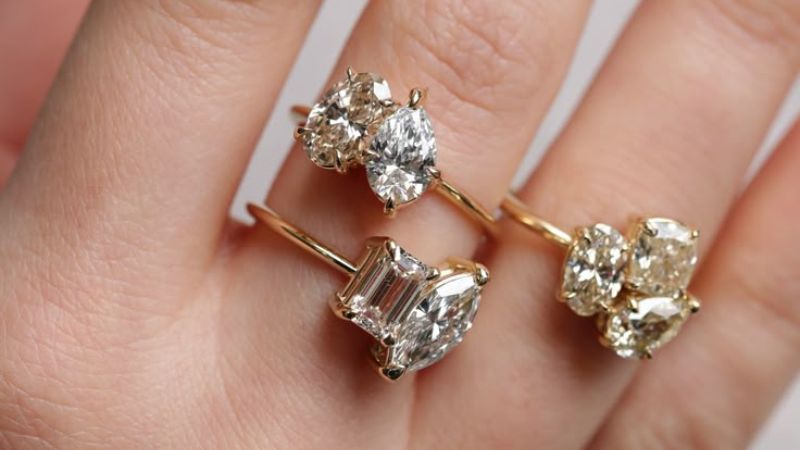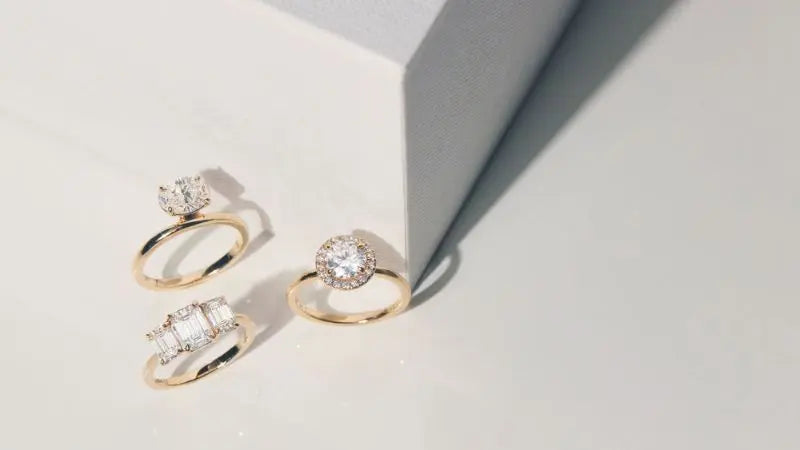Up To $2,500 OFF at checkout - Ends Dec 12
Free 30-day Returns | Lifetime Warranty
This guide will help you understand the key differences and similarities between the best metal for engagement rings.
1. Introduction
Choosing the right metal for a wedding band is just as crucial as selecting the perfect gemstone. The metal influences durability, appearance, and comfort.
With various options available, understanding each metal’s unique properties is essential. Your ideal choice depends on personal style, skin tone, and lifestyle.
This guide explores the key differences and benefits of popular metals for wedding and engagement rings.
2. Factors to Consider

When selecting a metal, keep these factors in mind:
- Durability: How well it resists scratches, dents, and daily wear.
- Aesthetic & Color: The metal’s hue and finish shape the ring’s overall look.
- Weight & Comfort: Heavier metals feel sturdy, while lighter ones offer enhanced comfort.
-
Allergies & Sensitivities: If you have sensitive skin, opt for hypoallergenic metals.
By considering these factors, you can choose a metal that complements your style and meets your practical needs.
3. Gold: A Timeless Classic
3.1. What Is Gold?
Gold is a soft, malleable metal with a natural luster, making it ideal for fine jewelry. It resists tarnishing but is too soft for daily wear in its pure form.

The solitaire Margot oval lab diamond ring and the classic Nathan solid band in yellow gold
To improve durability, it is alloyed with other metals. Gold purity is measured in karats (1-24)—the higher the karat, the purer and softer the gold. For long-lasting jewelry, 14k or 18k gold is preferred over 24k.
3.2. Types of Gold
- Yellow Gold: A classic, warm-toned metal made by mixing pure gold with copper and silver for added strength.

The side stone Elara emerald moissanite ring in yellow gold
- White Gold: A sleek, modern option alloyed with nickel or palladium. It features rhodium plating for a platinum-like shine but may require periodic re-plating.

The Nature Blissful oval side stone moissanite ring in white gold
- Rose Gold: A romantic, vintage-inspired choice with a pink hue, resulting from a higher copper content. It’s more durable than yellow and white gold but may trigger allergies in sensitive individuals.

The solitaire Skyler round lab diamond ring in rose gold
4. Platinum: Luxurious and Durable
4.1. What Is Platinum?
Platinum is a prestigious metal known for its natural white luster that never fades or tarnishes. It is highly durable and scratch-resistant, making it an excellent choice for long-lasting wedding bands.

The classic platinum diamond engagement ring
Its strength enhances the brilliance of diamonds and suits an active lifestyle. Unlike white gold, platinum does not require plating.
4.2. Pros and Cons of Platinum Jewelry
Pros:
- Naturally white—no need for rhodium plating
- Highly durable and scratch-resistant
- Hypoallergenic—ideal for sensitive skin
Cons:
- More expensive than other metals
- Heavier than most alternatives
4.3. Platinum vs. White gold: What's the difference?
Although white gold and platinum may appear nearly identical at first glance, there are several key differences between the two metals that set them apart.
Here's a detailed comparison table between Platinum and White gold:

Understanding these differences can help you decide which metal suits your needs best.
5. Sterling Silver: Elegant but High Maintenance
5.1. What Is Sterling Silver?
Sterling silver is a silver alloy consisting of 92.5% pure silver and 7.5% copper or other metals, enhancing its strength and durability.

White-silver colored material
The "925" stamp indicates its silver content. While more robust than pure silver, sterling silver is prone to tarnishing over time.
Commonly used in jewelry, including rings, necklaces, and bracelets, sterling silver is also found in high-end tableware, cutlery, and musical instruments due to its aesthetic appeal and malleability.
5.2. Pros and Cons of Sterling Silver Engagement Rings
Pros:
- Affordable: A budget-friendly option that allows for intricate designs and multiple styles.
- Versatile: Soft and easy to shape, enabling detailed craftsmanship.
- Lightweight & Comfortable: Ideal for everyday wear, especially for rings.
- Classic Appearance: Its bright sheen complements various styles and skin tones.
- Hypoallergenic: Has antibacterial properties that promote hygiene and reduce irritation.
Cons:
- High Maintenance: Requires regular polishing and proper storage to prevent tarnishing.
- Temporary Option: Often chosen as a starter ring for budget-conscious couples planning future upgrades.
- Less Durable: Susceptible to scratches, bending, and tarnishing, making it less ideal for long-term engagement or wedding rings.
6. How to Choose the Best Metal for Your Diamond
The right metal setting enhances a diamond’s appearance and complements its color grade:
- Colorless Diamonds (D-F): Best paired with platinum or white gold to maintain their brilliance. Yellow or rose gold may reflect warmth into the stone.

The sterling silver eternal brilliance rings
- Near-Colorless Diamonds (G-I): Versatile and pair well with both white and warm metals.
- Slightly Tinted Diamonds (J-L): Work best with yellow or rose gold to enhance their natural warmth.

The Lenny oval lab diamond ring in yellow gold
-
Fancy Color Diamonds:
- Pink, blue, and black diamonds stand out in white gold or platinum.
- Brown and yellow diamonds pair well with yellow or rose gold for a harmonious aesthetic.

The blue sapphire diamond engagement ring in white gold
For those who prefer warm metal settings but want to maintain a diamond’s icy brilliance, using white metal prongs or a two-tone setting can help balance the effect.
7. Does Metal Color Influence Diamond Color?
Yes, the metal setting impacts how a diamond appears, as diamonds reflect surrounding colors:
- D-F diamonds may take on warmth when set in yellow or rose gold.
- G-L diamonds exhibit less noticeable reflection effects.
- J-L diamonds complement yellow gold, creating a vintage aesthetic.

GIA diamond color grading scale
For an optimal balance, a two-tone setting with a warm band and white metal prongs preserves the diamond’s brilliance while adding contrast.
8. Conclusion
Choosing the best metal for an engagement ring depends on personal style, budget, and long-term durability needs.
Each metal offers distinct benefits, from affordability to hypoallergenic properties and lasting elegance. Consider these factors carefully to select a metal that suits your lifestyle and aesthetic vision.
Looking for more insights? Explore our comprehensive metal guide to find the perfect match for your engagement ring!
See more: Moissanite Rings: From History to Types – Your Complete Buying Guide




